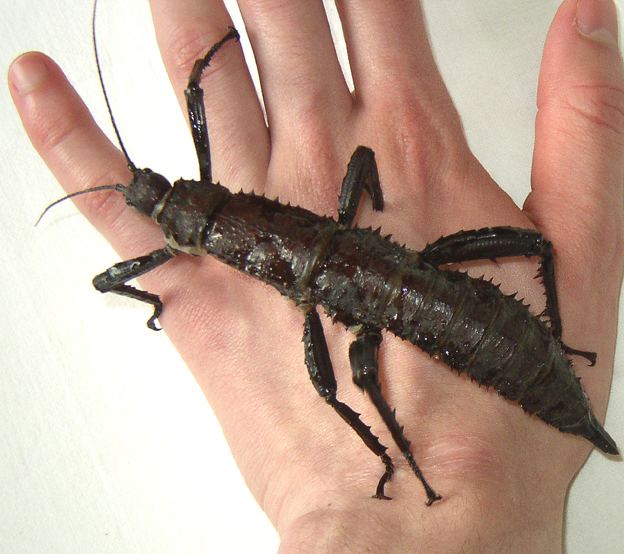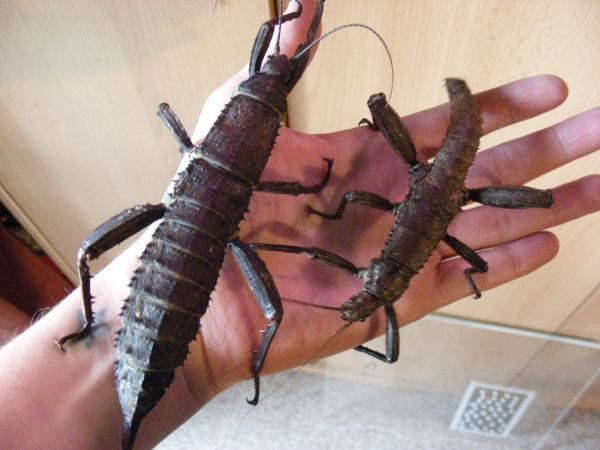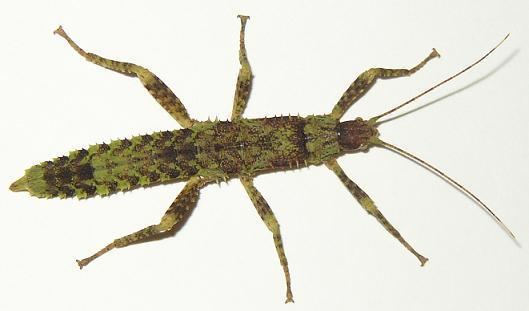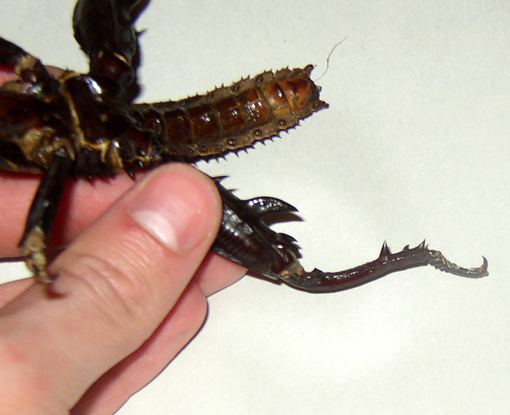Subfamily Eurycanthinae Rank Species | Family Phasmatidae Genus Eurycantha Higher classification Eurycantha | |
 | ||
Similar Eurycantha, Phasmids, Insect, Extatosoma tiaratum, Extatosoma | ||
Giant stick insect laying eggs eurycantha calcarata
Eurycantha calcarata (common names thorny devil stick insect and giant spiny stick insect ) is a species of phasmid endemic to Australasia.
Contents
- Giant stick insect laying eggs eurycantha calcarata
- Handling a spiny stick insect group eurycantha calcarata
- Range and Habitat
- Description
- Behavior
- Reproduction
- Diet
- References

Handling a spiny stick insect group eurycantha calcarata
Range and Habitat

E. calcarata is native to New Guinea, New Caledonia, and the Solomon Islands. Typical habitat includes warm humid rainforest where it is found in foliage and ground litter.
Description

The thorny devil color ranges from pale green to brown and resembles bark or rotten wood. Both sexes are wingless and armored with spines on body and legs. Exhibiting the sexual dimorphism of many similar insects (particularly other phasmids as well as mantises), males are small and thinner, less than 5 inches (11–12 cm) long while females are typically 6 inches (15 cm) in length. The male has enlarged hind leg femurs with a curved spine or thorn on the underneath side, large enough to be used as a fish hook in New Guinea. Females have a larger abdomen tipped with an ovipositor.
Behavior

Thorny devils are nocturnal feeders and group together during the day to hide under bark and in trees hollows, providing protection from predators. Like other types of stick insects they use crypsis and catalepsy to evade predators.
Reproduction
E. calcarata typically reproduce through sexual reproduction and produce eggs that hatch 4.5-6.5 months later. When no males are present in the population, this stick insect exhibits parthenogenesis instead. Eggs are typically 8.2 mm and 4 mm wide, with a somewhat cylindrical shape. Egg color can vary from shades of brown to grey and surface texture is rough and shiny.
Diet
E. calcarata are vegetarians, consuming forest leaves including eucalyptus, ficus, bramble, raspberry, rose, and guava.
